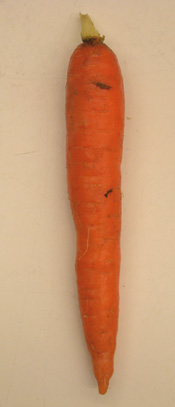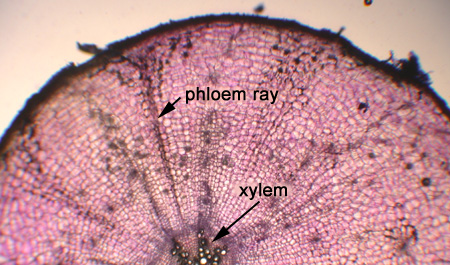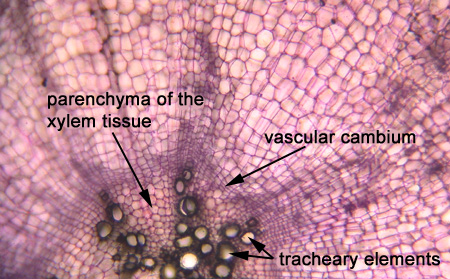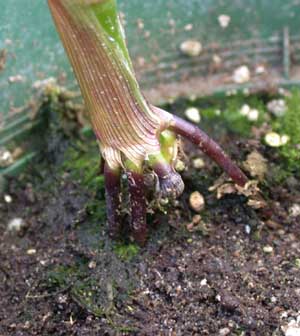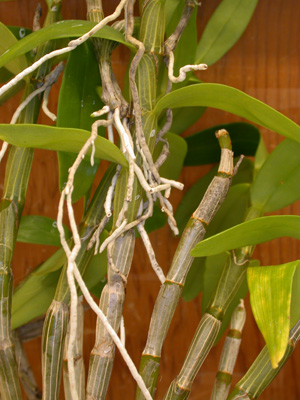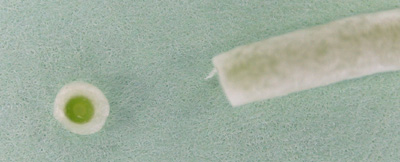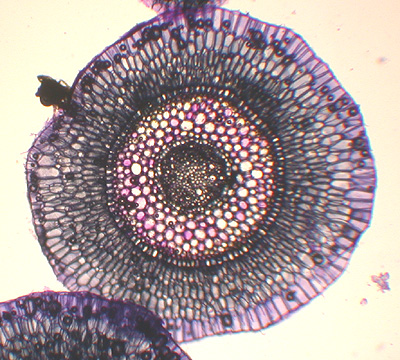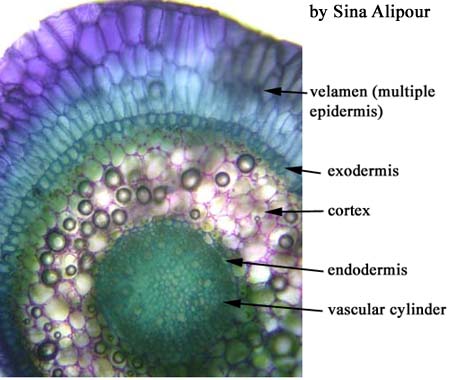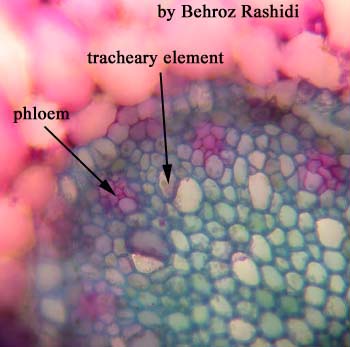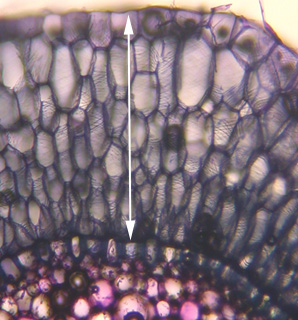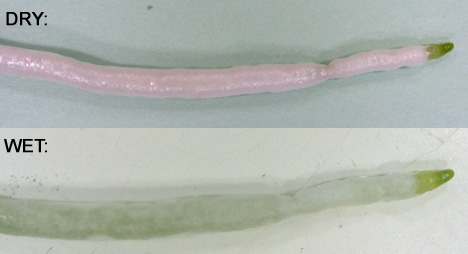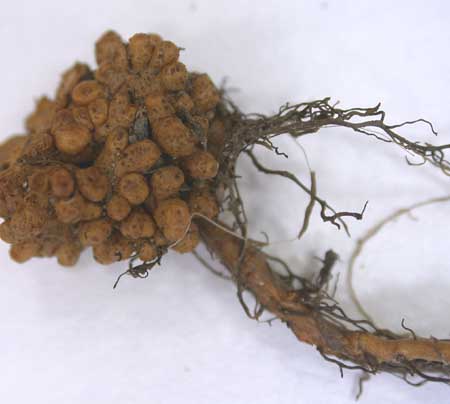ROOT MODIFICATIONS
1. Function – Storage
Daucus carota (carrot)
Much of the vascular tissue of the carrot is actually made up of parenchyma cells.
This cross-section shows you how much of the carrot is secondary phloem (remember the phloem ray is part of the secondary phloem). Note that the vast majority of cells are parenchyma.
This close-up of the xylem shows you that there is lots of parenchyma in the xylem as well….and look at that fabulous vascular cambium!!!!!!!!
2. Function – Support
Any of the three plant organs may be modified to support a plant upright or to help it to climb. Prop roots serve the former purpose.
Prop Roots:
Zea (Corn)
Adventitious roots arising from the base of the stem help to support the plant.
Ficus
These are prop roots of Ficus. They function in support of the tree.
Pandanus
This Pandanus tree is a monocot. Remember that monocots do not have true secondary growth. They get to be quite large so prop roots help to stabilize this plant.
3. Function – Photosynthesis
Roots may be modified to serve as photosynthetic organs in place of or as a supplement to the leaves. Roots of epiphytic orchids may develop a chlorophyllous layer and serve as a supplemental, or even as the only, site of photosynthesis for the plant.
Cattleya (orchid) aerial root
(Raven 7th, p. 544; 8th, p. 576)
Aerial roots of Cattleya are not typical roots! This plant is an epiphyte so the roots are aerial. They do serve as absorptive organs, but they are also photosynthetic.
A close up of the roots:
If we chop a root in half we can see that within the white multiple epidermis (velamen) there is photosynthetic tissue.
Below is a cross-section through an aerial root (stained with toluidine blue).
Here is a cross-section through a root. It has been stained with toluidine blue. The cells of the cortex are phtosynthetic.
The central core consists mainly of vascular tissue, with parenchyma cells in the centre.
A layer of thick-walled cells (endodermis) is present outside the central core. Outside of the endodermis there is a cylinder of parenchyma cells which contain chloroplasts (thus called chlorenchyma).
The outer white covering (here blue because it has been stained with toluidine blue) is wide and consists of elongated cells, with thickened bands on the cell walls which give the tissue a criss-cross appearance. This tissue is considered by many people to be a multiple epidermis and has been given the name velamen. The velamen is thought to be a protective structure, possibly providing protection from both mechanical injury and water loss.
Here is a little demonstration showing a dry root and a wet root. You can see that as the cells of the velamen fill up with the water the colour of the cortex cells can be seen. Pretty neat system. When the root is dry the velamen is white and reflects light (helping to reduce water loss).
4. Function – Overcoming Nitrogen Deficiency
Root Nodules
Here are root nodules on red alder (Alnus rubra). Bacteria Frankia live within the nodules. Such bacteria fix atmospheric nitrogen into a form useable by plants. In turn the plant provides the bacteria with carbohydrates.
ROOT APEX
HERBACEOUS AND WOODY ROOTS
ROOT MODIFICATIONS
BACK TO ROOT FRONTPAGE

